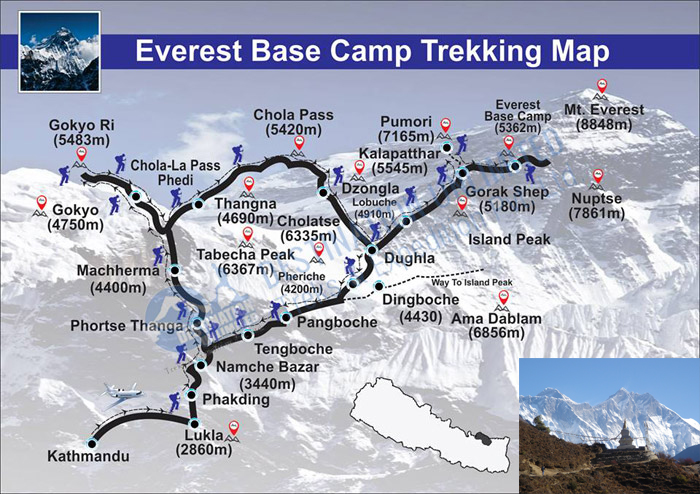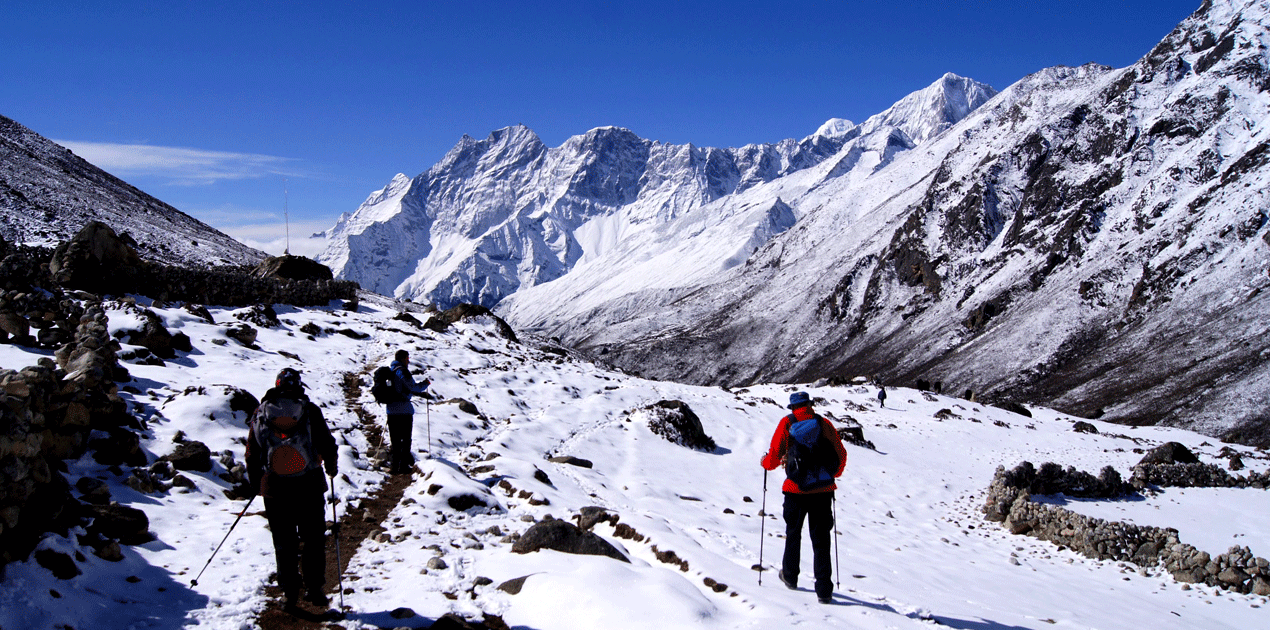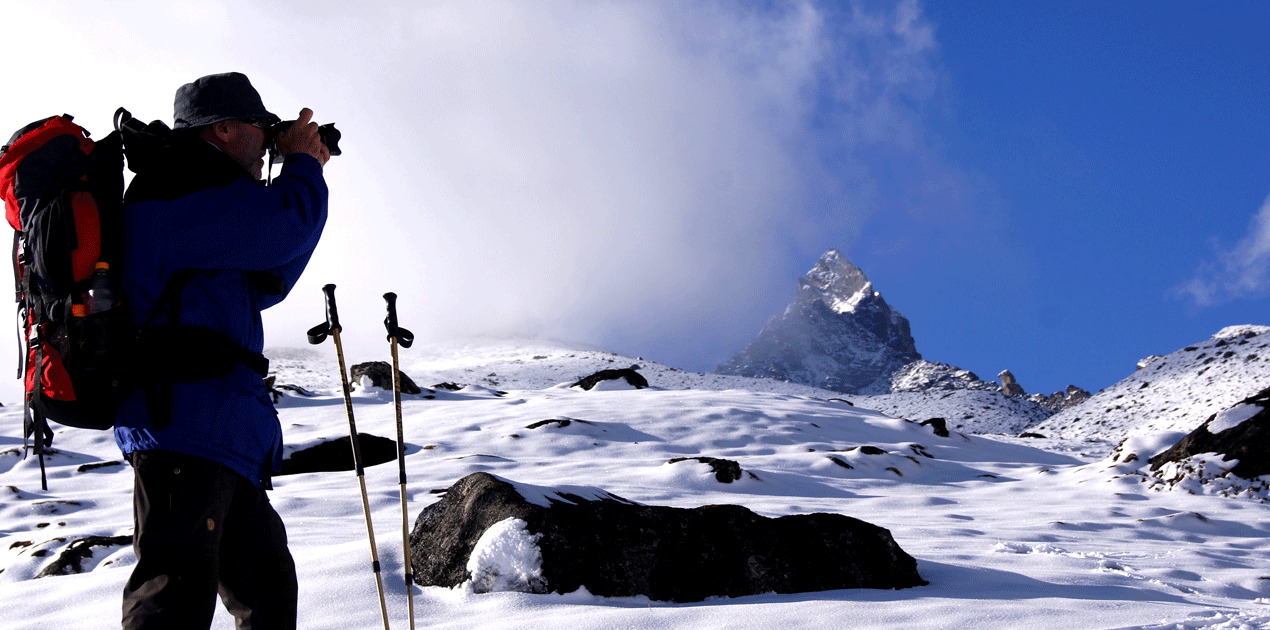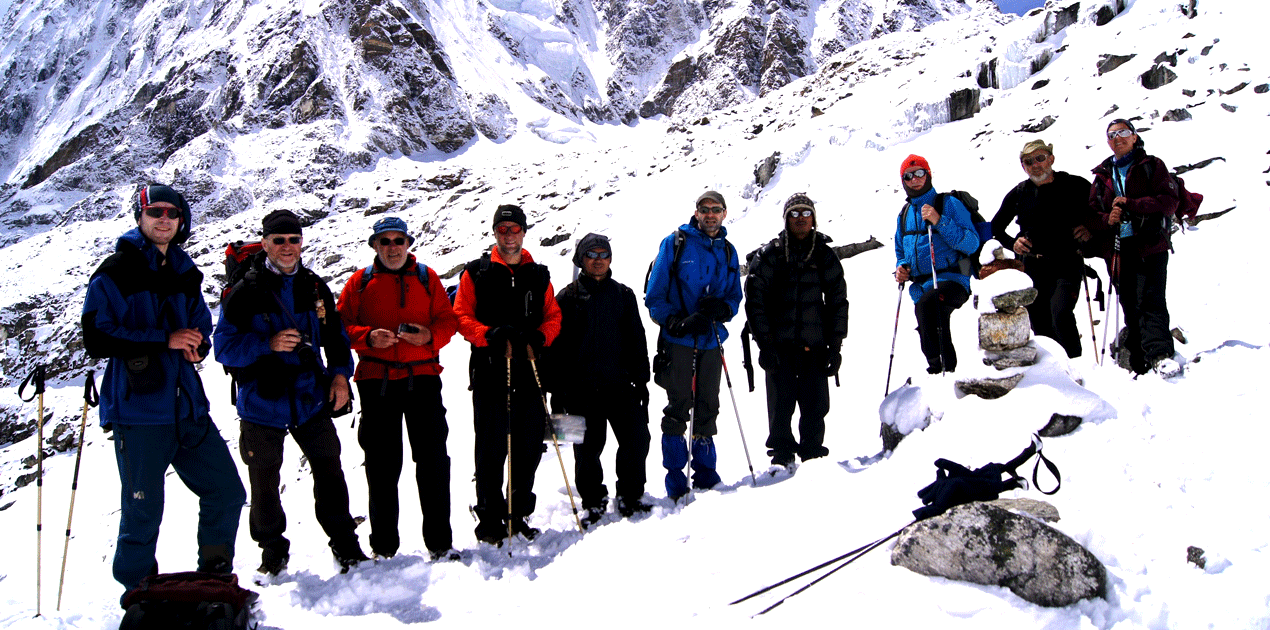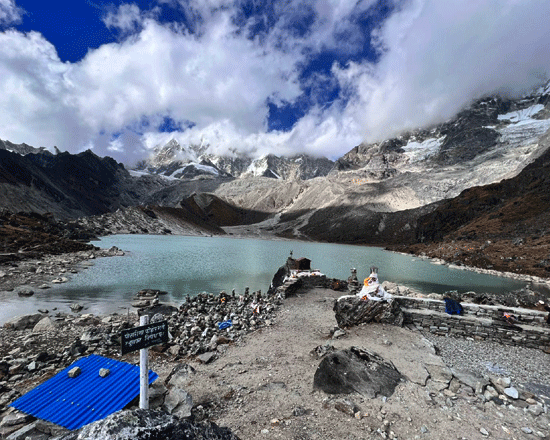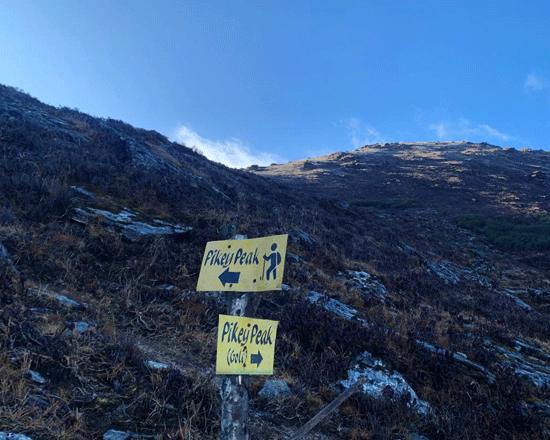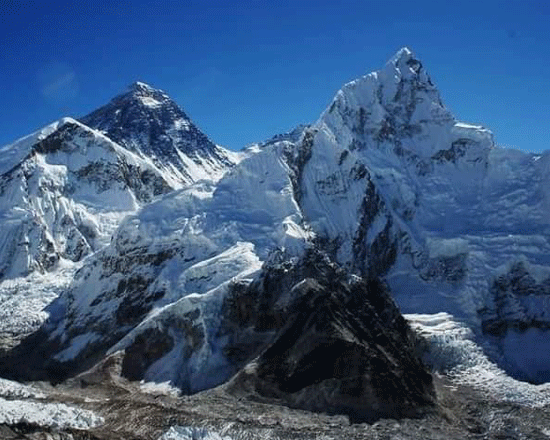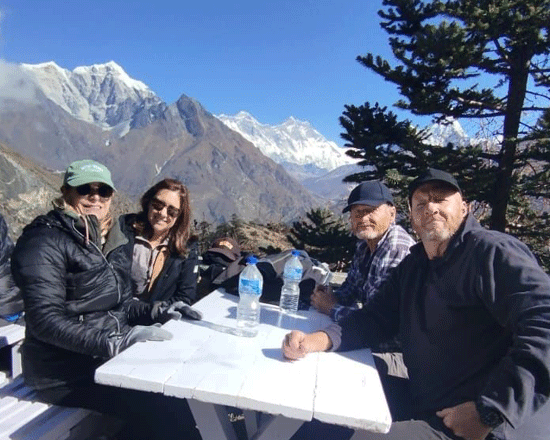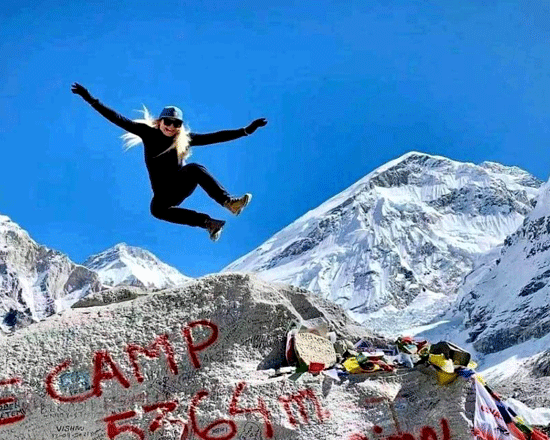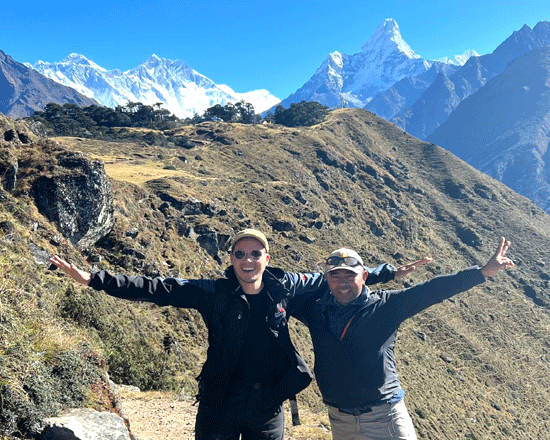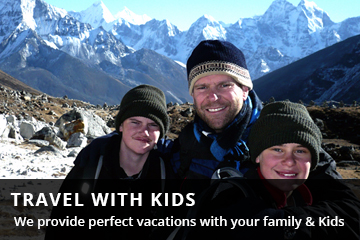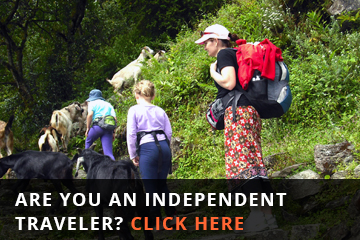Renjo la pass
Renjo la pass
Everest RegionTrip Facts
Since the terrain can be hard and the days long, hikers on these treks should be in good physical condition and have some previous mountain walking experience. Steep climbing may be involved, although it is never necessary to use ropes. Treks at this level can he arranged for periods of 16 to 21 days. Typically, a gradual ascent through a green river valley will lead you up to a number of high passes, where you will reach the altitude of 5416m. Often times, you will get a close insight into the Tibetan culture. Participants should expect to trek above 5416m/17872ft.
Mode of Travel : Flight/Land Hold Your Guide : Navaraj Rai100%
Overview
Gokyo Renjo la Pass Trek 10-day Itinerary
Gokyo Renjo La pass trek is an extraordinary adventure, offering a remote and alternative route within the renowned Everest Region. Situated north of Namche Bazaar and to the east of Thame Village, Renjo la Pass presents trekkers with breathtaking views of the Himalayas, while also serving as the closest trail to Nangpa-La Pass, which connects to Tibet. This path has historically been used for Tibetan trade, as merchants cross the pass and make their way to Namche Bazaar to sell their things.
For very eager trekkers seeking a genuine adventure in a spectacular landscape, the Everest Renjo Pass Trek provides an exhilarating experience. Renjo La Pass is also part of the popular three-pass trek in the Khumbu region, linking the beautiful Gokyo Lake and Everest Base Camp routes through the Cho La Pass and Renjo La Pass.
The Gokyo Renjo la trek is not for the faint of heart, as it involves challenging sections at high altitudes shortly after leaving Namche. The ascent to Renjo la Bhanjyang takes you to an impressive elevation of 5,435 meters above sea level. However, the rewards are worth the effort, as the scenery along the way showcases the magnificence of the Himalayas. From the glistening turquoise waters of the Gokyo lakes against the backdrop of a clear blue sky, to the prominent Ngozummpa Glacier and the awe-inspiring peaks of Everest, Lhotse, Cholatse, and Tawache, every view is a feast for the eyes.
Best time
For the Renjo la Pass trek, the best times to embark on this adventure are during the spring season, specifically from March to June. These months offer trekkers favorable weather conditions and excellent visibility, allowing them to fully immerse themselves in the awe-inspiring natural beauty of the region. With blooming flowers and verdant greenery, the landscape becomes a feast for the senses, enhancing the overall appeal of the trek. Furthermore, during this time, the trails are relatively less crowded compared to the peak trekking season, ensuring a more tranquil and peaceful experience for adventurers.
Alternatively, the early months of September to December also present an optimal window for the Renjo la Pass trek. This period marks the autumn season when the weather is stable, and the skies are generally clear. The days offer mild temperatures, perfect for comfortable trekking. Autumn unveils breathtaking views of the surrounding mountains, as the exceptionally clear skies allow trekkers uninterrupted panoramas of the majestic Himalayas. Similar to the spring season, embarking on the Renjo la Pass trek during autumn offers the advantage of a peaceful journey, with fewer fellow trekkers on the trails.
Both spring and autumn provide the ideal conditions for exploring the remote and ecologically pristine Khumbu Territory. By opting for the Renjo la pass route, trekkers can steer clear of the crowds often encountered on more popular trails and instead indulge in the untouched beauty of the region. Whether one prefers the vibrant landscapes of spring or the crystal-clear vistas of autumn, the Renjo la Pass trek guarantees an unforgettable adventure in the middle of the magnificence of nature.
Trekking itinerary and Route
The Renjo la pass trek itinerary typically begins with a scenic flight to Lukla, followed by a trek alongside the captivating Dudh Koshi River, eventually leading to Namche Bazaar. After a day of rest in Namche for acclimatization, trekkers continue their journey towards Renjo La Top, passing through the charming Sherpa village of Thame. This route is known for being less crowded compared to the Tengboche side, offering a more serene experience. Basic accommodation options are available in Lungden, making it a convenient stop along the way. Once the Gokyo Valley is explored, the return trek follows a route back to Dole, Namche, and Lukla, and concludes with a flight back to Kathmandu.
During the Renjo la trekking adventure, there are opportunities to ascend several peaks if one has extra days to spare. Sundar Peak in Thame and Nangkartshang Peak, also known as Lungden Peak, are two notable options. Lungden Peak, standing at an impressive 5,100 meters above sea level, is located along the ridge of the Renjo La pass. As a result, trekkers have the possibility of summiting Lungden Peak on the same day they pass through Lungden village en route to Renjo la. These additional peaks provide an exciting challenge and a chance to further elevate the trekking experience through the breathtaking surroundings.
About Sundar Peak
The Sundar Peak is 536o m above sea level and can be summited during your Renjola Pass trek. The Sunder Peak is situated directly above the village of Thame. While this peak is easily accessible, a winding path straight up begins at the gompa above Thame; however, if you have a few extra days, we recommend adding a trip to Sundar Peak to complete the trip.
Our full board package trip of the Renjo la trek 10-day itinerary is from Kathmandu to Kathmandu. The cost includes round-trip flight tickets, experienced guides, and porters, well equipment and insurance for the staff, lodge accommodations during the trip, 3-time meals, tea and coffee, national park fee, Pasang Lhamu Rural Municipality Entrance Permit, etc.
Physical fitness level
What’s crucial is a willingness to prepare physically and mentally, and to respect the demands of the environment. It is recommended to take a walk for a few hours a day for a month to maintain your stamina during the trek. Proper acclimatization ensures trekkers can fully enjoy the journey, absorbing the breathtaking landscapes and immersing themselves in the local culture. Ensure that you bring the recommended trekking equipment list. Remember, quality trekking equipment can make your trip enjoyable, while poor one can make it miserable.
Gear essentials for Renjola Pass
Summer Gear
- Clothing:
- Base Layers: Lightweight moisture-wicking shirts and pants.
- Mid Layers: Fleece jacket or down jacket for warmth.
- Outer Layers: Waterproof and windproof jacket and pants.
- Hiking Pants and Shorts: Convertible pants that can be used as shorts.
- Hat and Gloves: Sun hat and lightweight gloves.
- Socks: Moisture-wicking socks (bring several pairs).
- Footwear: Sturdy, comfortable hiking boots (well broken-in) and camp shoes or sandals.
- Gear:
- Backpack: 30- 40L for day hikes, 50- 70L for multi-day treks.
- Sleeping Bag: Rated for 0°C to -5°C (summer weight).
- Trekking Poles: Adjustable and lightweight.
- Headlamp: With extra batteries.
- Sunglasses: UV protection.Water Bottles/Bladder:
- At least 2 liters in capacity.
- Water Purification: Tablets or a filter.
- Navigation Tools: Map, compass, GPS device.
- First Aid Kit: Basic first aid supplies, including blister treatment.
- Sun Protection: Sunscreen, lip balm with SPF.
- Personal Hygiene: Wet wipes, hand sanitizer, biodegradable soap.
Optional
- Camera/Phone: For photos and navigation.
- Notebook and Pen: For journaling.
- Portable Charger/Solar Charger: To keep electronics powered.
Winter Gear
- Clothing:
- Base Layers: Thermal tops and bottoms.
- Mid Layers: Heavy fleece or down jacket.
- Outer Layers: High-quality waterproof and windproof jacket and pants.
- Insulated Pants: For extra warmth.
- Hat and Gloves: Warm beanie, insulated gloves, and glove liners.
- Socks: Thermal socks (bring several pairs).
- Footwear: Insulated, waterproof hiking boots and gaiters.
- Gear:
- Backpack: 40- 50L for day hikes, 60- 80L for multi-day treks.
- Sleeping Bag: Rated for -15°C to -20°C (winter weight).
- Trekking Poles: Adjustable and lightweight.
- Headlamp: With extra batteries.
- Sunglasses: UV protection.
- Water Bottles/Bladder: Insulated to prevent freezing.
- Water Purification: Tablets or a filter.
- Navigation Tools: Map, compass, GPS device.
- First Aid Kit: Basic first aid supplies, including blister treatment.
- Sun Protection: Sunscreen, lip balm with SPF.
- Personal Hygiene: Wet wipes, hand sanitizer, biodegradable soap.
Additional Winter Gear:
- Balaclava or Neck Gaiter: For additional face protection.
- Microspikes or Crampons: For icy conditions.
- Thermal Blanket: Emergency use.
- Insulated Jacket: A Heavy down jacket for camp and rest stops.
- Hot Water Bottle: For warmth at night.
Optional
- Camera/Phone: For photos and navigation.
- Notebook and Pen: For journaling.
- Portable Charger/Solar Charger: To keep electronics powered.
General Tips
- Acclimatization: Spend a few days acclimatizing to avoid altitude sickness.
- Physical Preparation: Train with cardio and strength exercises to prepare for the trek.
- Permits: Ensure you have the necessary trekking permits for the Everest region.
- Guides and Porters: Consider hiring local guides and porters for support and safety.
With the right gear and preparation, you can have a safe and enjoyable trek across the Renjola Pass in both summer and winter.
Highlights of the Renjo La pass trek:
- Stunning view from Renjo-La Pass.
- Allowed to summit Gokyo Peak 5,357 m without a climbing permit.
- Lakes’ heritage land, the blue sky color of the Gokyo lakes.
- The 4 highest mountain views over the 8,000 m, Cho Yu, Lhotse, Everest, and Makalu.
- Ancient Buddhist Monasteries.
- Sherpa cultural heritage.
- 9-day itinerary for the circle.
Note:
If you are interested in undertaking the Gokyo Lake Renjola Pass Trek with the assistance of an expert guide, Nepal Wilderness Trekking Pvt. Ltd. is a local Kathmandu-based company that specializes in organizing treks and expeditions at a competitive cost in Nepal. Our experienced and knowledgeable guides are familiar with the Everest region trek routes and the surrounding area, providing valuable insight into the local culture, customs, and geography, and ensuring your safety and comfort throughout the journey. By hiring an expert guide, you can enhance your trekking experience, access valuable advice on acclimatization and equipment, and engage with local communities to learn more about the region’s culture and history.
Nepal Wilderness Trekking Pvt. Ltd. offers the Renjola circuit trek package at the best price all year round, using our expertise and extensive local knowledge to guarantee a reliable, memorable, and well-organized trekking experience.
Detail Itinerary
- Day 01: Fly to Lukla and Trek to Phakding
Take an early morning flight from Kathmandu or Ramechhap to Lukla (Hillary Airport, 2,800 meters), a scenic journey of approximately 35 minutes. Upon arrival, meet your trekking guide and porter, then begin your trek along the picturesque Dudh Koshi River. The trail passes through charming Sherpa villages and lush pine forests. After about 3 hours of easy walking, reach Phakding (2,640 meters).
Overnight stay at a lodge in Phakding. - Day 02: Trek to Namche Bazaar
Begin the day walking alongside the Dudh Koshi River, crossing several suspension bridges, including the famous Hillary Suspension Bridge. The trail gradually ascends through forested paths before a final steep climb to Namche Bazaar (3,440 meters), the vibrant hub of the Khumbu region. The trek takes approximately 6 to 7 hours.
Overnight stay at a lodge in Namche Bazaar. - Day 03: Acclimatization Day in Namche Bazaar
Spend the day acclimatizing to the higher altitude. In the morning, hike to the Everest View Hotel (3,880 meters) for sweeping views of Everest, Lhotse, Ama Dablam, and other peaks. Later, visit the Sherpa Museum and explore Namche Bazaar’s lively markets, cafes, and traditional shops.
Overnight stay at the same lodge in Namche Bazaar. - Day 04: Trek to Thame
Leave Namche behind and follow a peaceful trail through rhododendron forests and ancient Sherpa settlements. Enjoy panoramic views of Kongde Ri and other surrounding peaks. Arrive in Thame (3,750 meters), the hometown of many renowned Sherpa mountaineers, including Tenzing Norgay. Total walking time is about 4 hours.
Overnight stay at a lodge in Thame. - Day 05: Trek to Lungdeng
Today’s trail takes you through remote high-altitude terrain with fewer trekkers. Ascend gradually through yak pastures, ancient mani walls, and scattered stone huts. The landscape becomes more rugged as you reach Lungdeng (4,600 meters) after 5 to 6 hours of trekking.
Overnight stay at a lodge in Lungdeng. - Day 06: Cross Renjo La Pass and Trek to Gokyo
Start early for the most challenging and rewarding day of the trek. Climb steadily to Renjo La Pass (5,360 meters), where you’ll be rewarded with dramatic views of Everest, Lhotse, Makalu, and Cho Oyu. After enjoying the vistas, descend along a scenic trail toward Gokyo (4,760 meters), set beside the stunning third Gokyo Lake. Today’s trek takes about 6 hours.
Overnight stay at a lodge in Gokyo. - Day 07: Climb Gokyo Ri and Trek to Dole
Begin the day with an early morning hike up Gokyo Ri (5,357 meters) to witness a spectacular sunrise over four of the world’s 8,000-meter giants: Everest, Lhotse, Makalu, and Cho Oyu. Return to Gokyo for breakfast, then descend to Dole (4,200 meters) through alpine pastures and glacier-fed streams. The trek takes around 4 to 5 hours.
Overnight stay at a lodge in Dole. - Day 08: Trek to Namche Bazaar
Continue descending through beautiful forests of rhododendron, fir, and pine. Pass through traditional Sherpa villages such as Khumjung and Sanasa before arriving back in Namche Bazaar (3,440 meters). Trekking time is approximately 5 to 6 hours.
Overnight stay at a lodge in Namche Bazaar. - Day 09: Trek to Lukla
Retrace your route through Monjo, Jorsalle, and Phakding, enjoying your final full day of trekking. The trail follows the Dudh Koshi River as you head back to Lukla. Today’s walk takes about 7 to 8 hours. In the evening, celebrate your successful trek with your team over a farewell dinner.
Overnight stay at a lodge in Lukla. - Day 10: Fly Back to Kathmandu or Ramechhap
Take an early morning flight from Lukla to either Kathmandu or Ramechhap (approximately 35 minutes). Upon arrival, transfer to your hotel. Enjoy the rest of the day relaxing or exploring the cultural highlights of the city.
End of the trek.
Cost Included
- Domestic flight tickets from Kathmandu/Rammecha to Lukla and Lukla to Kathmandu or Rammecha
- Italian, Chinese, Nepali, Indian, and other European foods are available three times a day (breakfast, lunch, and dinner).
- Accommodation in tea houses according to the itinerary
- Kitbag for storing your belongings
- Sleeping bag for a comfortable night's sleep on a trek in minus-25 degrees
- Everest National Park Entrance Trekking Permit
- Khumbu Pasang Lhamu Rural Municipality Entrance Permit
- Experienced English-speaking, Government-licensed holder, trekking guide
- One porter is provided for every two to three participants. (Note: Solo clients who require a porter will incur an additional cost.)
- Guide, Porter meals, accommodation, salary, and insurance
- Necessary paperwork, all government, and local taxes
- A certificate of appreciation from Nepal Wilderness Trekking after a successful trek
Cost Excluded
- Airfare for international flights
- Upon arrival at Tribhuwan International Airport, Nepal, entry visa fees vary by duration (15 days - $25-30, 30 days
- Accommodations and meals in Kathmandu before and after our journey
- Personal equipment for high and cold temperatures
- Emergency high-altitude rescue and evacuation are covered by travel insurance
- All beverages, Soft and caffeinated table drinks such as Coke, beer,
- Drinking water/mineral water, Dessert, etc. Hot shower, laundry
- Tip for the guide and the porter
- Excluded are all costs and expenses not listed under "cost includes."
- Inclusion of costs or delays beyond the control of the management, such as landslides, weather conditions, itinerary modifications due to safety concerns, illness, changes in government policies, strikes, etc.
Trip Map
